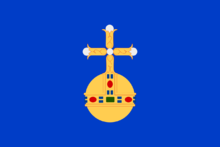Feudalism is an authoritarian, decentralized, and culturally reactionary ideology practiced throughout Europe from as early as the sixth century BCE to as late as technically 2008 (Channel Island of Sark) although its prime was from the 9th century- when the middle ages properly kicked off- to the 17th century- when The ![]() Enlightenment Thought had properly started to create an entirely new status quo.
Enlightenment Thought had properly started to create an entirely new status quo.
Feudalism used to be based on holding all land in fief or fee and the resulting relation of lord to vassal. It was characterized by homage, legal and military service of tenants, and forfeiture.
Lords provided some of their lands to vassals, or tenants, in exchange for their support to the Lord. Vassals generally were required to serve guard duty, and, later, they paid a fee to acquire mercenaries (soldiers-for-hire). In exchange for protection, land to work, and a place to live, peasants provided the Lord with labor or a share of the produce or livestock yielded from his lands.
History
Being the dominant socioeconomic system in Europe for over a millennium, feudalism had undergone many changes, developing independently in European countries into systems with differing levels of central authority and relations between the estates.
The Early History
Feudalism, having existed in various forms throughout the previous centuries, began its rise to prominence during the 8th century CE during the fragmentation of the Carolingian Empire. The lack of bureaucratic infrastructure for the central power to enforce its authority and the increasing allocation of land to the mounted soldiers in exchange for their service led to the decentralization of power and the development of a system, wherein the hereditary landowners would take up the responsibilities, that would otherwise belong to the central authority, leading to them having absolute power over their fief.
The Downfall
By the 12th century, Feudalism had become the most prominent system in Europe, having evolved into a plethora of systems all across the continent with varying degrees of central authority. However, due to reliance on the relations between the liege and his vassals, the system weakened over time as it was getting more complex. Another serious blow came during the Black Death in the 14th century and the subsequent peasant revolts, which caused a chronic shortage of labor and the abandonment of large portions of farmable land. This, in turn, has led to the growth of towns and cities, as people were leaving the countryside for a chance to start a better life. The increase in the influence of cities that this shift brought has led to a significant change in the rigid feudal social structure - the emergence of a rich and powerful merchant class with no connections to the old aristocracy, which was pushing for a more meritocratic society. This, coupled with a weakening role of vassals in the defense of the realm due to the growing reliance on hired soldiers led to the centralization of power in the hands of the monarch and the emergence of ![]() Absolute Monarchism. However, some vestiges of feudalism would last in Europe, such as in Austria into the 19th century, and the Channel island of Sark finally abolished it as late as 2008.
Absolute Monarchism. However, some vestiges of feudalism would last in Europe, such as in Austria into the 19th century, and the Channel island of Sark finally abolished it as late as 2008.
Beliefs
The Three Estates
Feudal social structure is built on an idea of static inheritable positions in the hierarchy, divided broadly into three estates, each of which would posses certain rights and serve a certain purpose in society.
- The Clergy
Represents the spiritual authority of the realm, loyal to the Pope rather than a worldly monarch. It serves a wide range of social functions, such as registering marriages, documenting births and deaths, etc. Not being subordinate to any temporal power, the church however owns a significant amount of land and maintains an independent ecclesiastical hierarchy.
- The Nobility
Consists of the hereditary landowning elite of the realm, characterized by the system of vassalage, whereby a vassal would swear service to his liege, usually in return for a land tenure or a fief. Usually comprising less than 1% of the total population, nobility serves administrative and military functions, with the latter however being usually reserved for the members of the lower nobility, such as the knights.
- The Third Estate
It is an umbrella term, referring to anyone who doesn't belong to the first two estates, but mainly consisted of peasantry and townsfolk. It is the biggest though the least privileged estate usually comprising more than 95% of total population and serving a wide range of functions including, but not limited to: land cultivation, artisanry and trade.
Minor Variants
 Eastern Feudalism
Eastern Feudalism
In China a system of feudalism named Fēngjiàn(封建)developed during the Zhou Dynasty. Sharing many similarities with the European model, the Zhou kings ruled through the allocation of land to the nobles, legitimized by their nominal allegiance to the central authority. Each of the noble houses ruled their land without the interference of the Zhou, only providing troops for the campaigns and paying regular homage to the imperial court. The system however led to a great amount of internal instability, culminating in the Spring and Autumn period and the collapse of the Zhou. The subsequent Qin dynasty did not continue the policy of Fēngjiàn, deciding instead to ![]() centralize all power within the imperial court , which became the basic ruling models of every Chinese dynasty. However in modern times, the term Fēngjiàn turned into a pejorative term among left-leaning Chinese to refer individuals with
centralize all power within the imperial court , which became the basic ruling models of every Chinese dynasty. However in modern times, the term Fēngjiàn turned into a pejorative term among left-leaning Chinese to refer individuals with ![]() reactionary beliefs, usually those who do not support gender equality, despite Imperial China being a unitary absolutist state apart from the Empire of Korea (1897-1910) which also heavily influenced by Confucianism.
reactionary beliefs, usually those who do not support gender equality, despite Imperial China being a unitary absolutist state apart from the Empire of Korea (1897-1910) which also heavily influenced by Confucianism.
 Iqta
Iqta
Though sharing many similarities with European feudalism, the system of Iqta, practiced in the Muslim world was unmistakably distinct. The basis for the Iqta system was the allocation of land to the muqti for the purpose of collecting taxes. Unlike a European feudal lord, muqti didn't own the land and was only given a right to collect the revenue from it. Iqta was not inheritable and could be revoked.
 Caste
Caste
Similarly to the European estates, Indian caste system divides the population into four distinct social classes with a set of rights and responsibilities - the varnas:
- Brahmins - priests, scholars and teachers.
- Kshatriyas - warriors, rulers, administrators.
- Vaishyas - farmers, traders, merchants.
- Shudras - labourers.
By properly fulfilling one's purpose in life, one may have a chance to be reincarnated into a higher varna. However, failing to do so or interacting with untouchables may lead one to become an untouchable (the very bottom, supposed to consist of janitors and other "impure" occupations).
Sakdina
Sakdina (Thai: ศักดินา) was a system of social hierarchy in use from the Ayutthaya to early Rattanakosin periods of Thai history. It assigned a numerical rank to each person depending on their status, and served to determine their precedence in society, and especially among the nobility. The numbers represented the number of rai of land a person was entitled to own—sakdina literally translates as "field prestige"—although there is no evidence that it was employed literally. The Three Seals Law, for example, specifies a sakdina of 100,000 for the Maha Uparat, 10,000 for the Chao Phraya Chakri, 600 for learned Buddhist monks, 20 for commoners and 5 for slaves.
The term is also used to refer to the feudal-like social system of the period, where common freemen or phrai (ไพร่) were subject to conscription or corvée labour in service of the kingdom for half of the months of the year, under the control of an overseer or munnai (มูลนาย).
Since 1945, the term "sakdina" has been used frequently as a critique of Thai political authority, including demonstrators in large demonstrations in 2020-2021 Thai protests also criticized the persistence of authoritarian "sakdina" values in the administration of the Thai government, despite Thailand being centralized since 1870s.
Personality
Feud's personality is like that of a stereotypical medieval noble/royal or a knight (I highly encourage you to use Monty Python and the Holy Grail as references for that) and generally like ![]() his father.
his father.
How to Draw

Feudalism's design is based in a flag by u/PinkDolphinBoy
- Draw a ball with eyes
- Fill it with Blue
- Draw the Globus cruciger (aka the Holy Hand Grenade).
- (Optional) Draw appropriate class headgear
And you're done
Relationships
Nobles
 Combatocracy - The strong deserve to rule!
Combatocracy - The strong deserve to rule! Monarchism - My father who I inherited the kingdom of.
Monarchism - My father who I inherited the kingdom of. Aristocracy - This is definitely us!
Aristocracy - This is definitely us! Catholic Theocracy - All respect to the first estate.
Catholic Theocracy - All respect to the first estate. Reactionary Socialism - The ONLY good form of socialism.
Reactionary Socialism - The ONLY good form of socialism. Elective Monarchism - MORE POWER TO THE NOBILITY, FUCK YEAH!
Elective Monarchism - MORE POWER TO THE NOBILITY, FUCK YEAH! Reactionary Libertarianism - Finally
Reactionary Libertarianism - Finally  Anarcho-Capitalism has fully embraced me!
Anarcho-Capitalism has fully embraced me! Caste System - My based Hindu counterpart.
Caste System - My based Hindu counterpart. Neocameralism - Nerd contemporary version of myself.
Neocameralism - Nerd contemporary version of myself. Neoreactionaryism &
Neoreactionaryism &  Reactionaryism - You both do a great job.
Reactionaryism - You both do a great job. Federalism - Modern decentralization fan. Especially based in Malaysia and UAE because of delegation to nobility.
Federalism - Modern decentralization fan. Especially based in Malaysia and UAE because of delegation to nobility. Patchwork - We basically controlled Europe together after the Western Roman Empire collapsed, though it would've been nice if I had reestablished it.
Patchwork - We basically controlled Europe together after the Western Roman Empire collapsed, though it would've been nice if I had reestablished it.
Neutral
 Agrarianism - Pay your tithe in grain peasants and raiders shall never again assault your humble village.
Agrarianism - Pay your tithe in grain peasants and raiders shall never again assault your humble village. Anarcho-Capitalism - I don't like capitalism because it's a part of the enlightenment family. But people keep saying he's like me, so he must be doing something right.
Anarcho-Capitalism - I don't like capitalism because it's a part of the enlightenment family. But people keep saying he's like me, so he must be doing something right. Anarcho-Monarchism - I like decentralized realms but why must every man be a king?
Anarcho-Monarchism - I like decentralized realms but why must every man be a king? Parliamentarianism - What I eventually became in
Parliamentarianism - What I eventually became in  Britain. While opposing tyranny is based, nowadays he gives in too much for those peasants.
Britain. While opposing tyranny is based, nowadays he gives in too much for those peasants. Kraterocracy - You're too extreme, but you're still better than those rebellious peasants.
Kraterocracy - You're too extreme, but you're still better than those rebellious peasants. Constitutional Monarchism - Isn't this good, Your Majesty? I get to keep my right, you get to keep your crown... everyone is happy. However, most of your modern variants give too much power to the commoners at the expense of the nobility and the clergy though (still better than absolutism). But, F*** MEIJI! He both empowered himself at the expense of the daimyo and expanded the rights for the p*sants.
Constitutional Monarchism - Isn't this good, Your Majesty? I get to keep my right, you get to keep your crown... everyone is happy. However, most of your modern variants give too much power to the commoners at the expense of the nobility and the clergy though (still better than absolutism). But, F*** MEIJI! He both empowered himself at the expense of the daimyo and expanded the rights for the p*sants.
Peasants
- File:Enlightnenment.png Enlightenment Thought
 and
and  His Family
His Family  - Filthy peasants kicked me of my rightful estate!
- Filthy peasants kicked me of my rightful estate!  Capitalism - The insolent bourgeoisie has lost their minds! They have replaced land with factories as the main source of production, and have ruined EVERYTHING! I HATE YOU!
Capitalism - The insolent bourgeoisie has lost their minds! They have replaced land with factories as the main source of production, and have ruined EVERYTHING! I HATE YOU! Cameralism - Imagine thinking gold has value, grain is where its at!
Cameralism - Imagine thinking gold has value, grain is where its at! Monetarism - Imagine thinking PAPER has value, you're so dumb!
Monetarism - Imagine thinking PAPER has value, you're so dumb! Universal Monarchism - Thou hath ruined feudalism forever!
Universal Monarchism - Thou hath ruined feudalism forever! Absolute Monarchism - What do you mean my counties don't exist anymore?!
Absolute Monarchism - What do you mean my counties don't exist anymore?! Agrarian Anarchism &
Agrarian Anarchism &  Agrarian Socialism - BLOODY PEASANTS!
Agrarian Socialism - BLOODY PEASANTS! Soulism - Another bloody peasant that opposes feudalism!
Soulism - Another bloody peasant that opposes feudalism! Bio-Posadism - YOU INSANE IDIOT! YOUR STUPID BLACK DEATH KILLED ALL MY SERFS! NOW THERE'S NO ONE TO FARM GRAIN AND I'M AS GOOD AS USELESS!!!!
Bio-Posadism - YOU INSANE IDIOT! YOUR STUPID BLACK DEATH KILLED ALL MY SERFS! NOW THERE'S NO ONE TO FARM GRAIN AND I'M AS GOOD AS USELESS!!!! Economic Liberalism,
Economic Liberalism,  Welfarism &
Welfarism &  Regulationism - Stupid economic theories from the "enlightened"!
Regulationism - Stupid economic theories from the "enlightened"! Marxism-Leninism - Oppression by the weak! The worst system!
Marxism-Leninism - Oppression by the weak! The worst system! Centralism - NOO! S-stay back! Stay the hell away from me!
Centralism - NOO! S-stay back! Stay the hell away from me!
Further Information
Literature
Wikipedia
- Feudalism
- Neo-feudalism
- Fief
- Noblesse oblige
- Bastard feudalism
- Examples of feudalism
- Feudal aid
- Landed nobility
- Fengjian
- The Caste System
Videos
Online Communities
Gallery
-
Normal eyes
-
Angry
-
Without helmet
-
Credit: K-Tech
-
-
Credit: u/OzymanidasFR, Source
-
Credit: BetaBerdBjorsen, Source
-
Credit: K-Tech, Source
-
Credit to u/Borisyukishvili
References
| | |
| Self-Inserts | |
|---|---|








